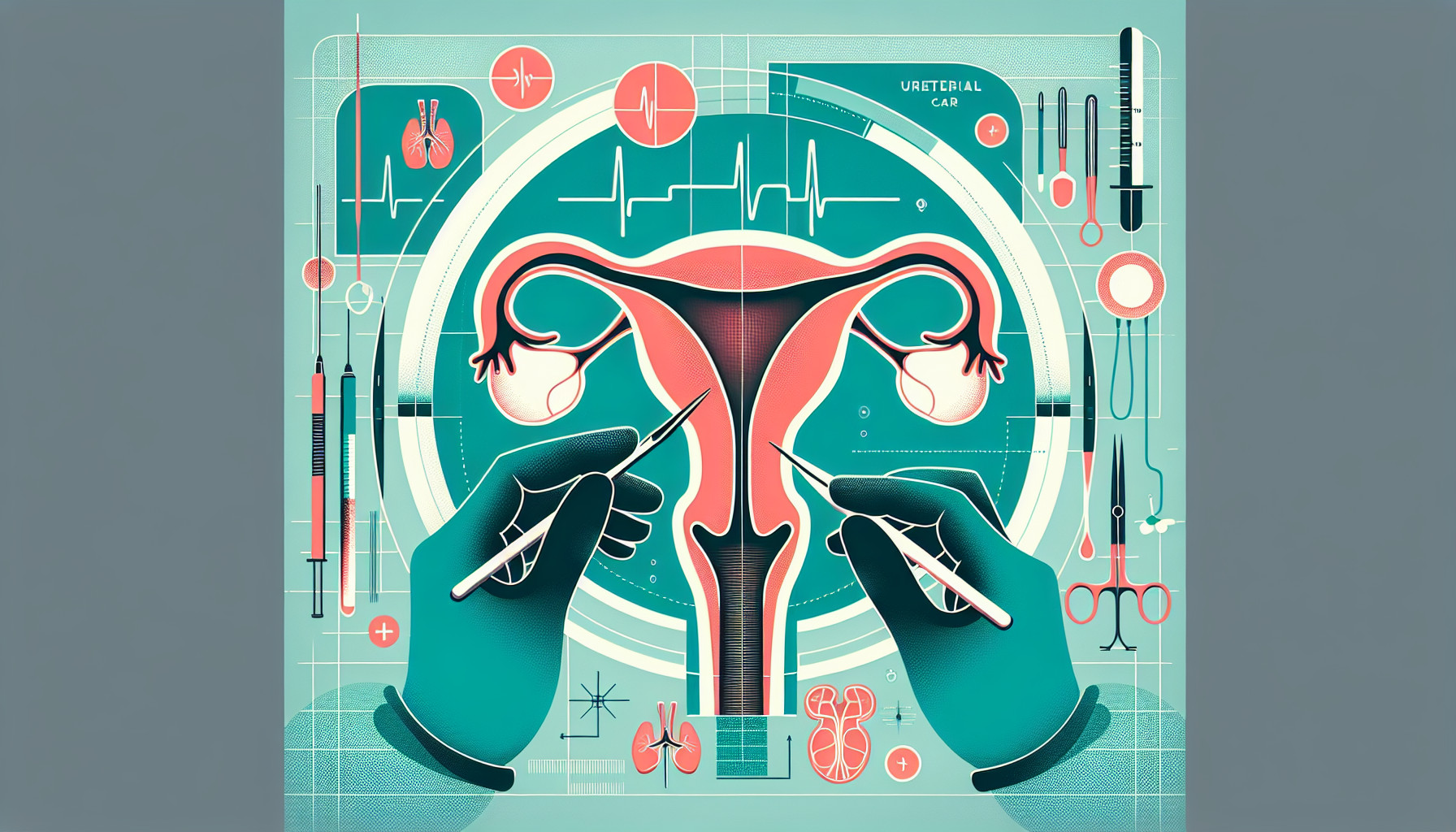Our Summary
This research paper discusses how robot-assisted surgery techniques can be used to treat narrowing of the ureter (the tube that carries urine from the kidneys to the bladder). Depending on the location of the narrowing, different approaches and techniques can be used. For narrowings near the end of the ureter, surgeries such as ureteroneocystotomy, psoas hitch, and Boari flap may be used. For narrowings anywhere along the ureter, procedures like ureteroureterostomy (connecting two parts of the ureter together), buccal mucosa graft ureteroplasty (using tissue from the mouth to repair the ureter), and appendiceal flap ureteroplasty (using tissue from the appendix to repair the ureter) can be done. If the disease is extensive, a procedure called ileal ureteral substitution, which uses a segment of the small intestine to replace the ureter, may be performed. Lastly, autotransplantation, or moving the kidney to a different location in the body, is only done in severe cases.
FAQs
- What is ureteral reimplantation and what techniques are used in the procedure?
- When is ileal ureteral substitution or autotransplantation considered for ureteral strictures?
- What is the role of robotically assisted laparoscopic techniques in treating ureteral strictures?
Doctor’s Tip
One helpful tip a doctor might tell a patient about ureteral reimplantation is to follow post-operative care instructions carefully, including taking prescribed medications, avoiding heavy lifting or strenuous activity, and attending follow-up appointments to monitor healing and recovery progress. It is also important to stay well-hydrated and maintain a healthy diet to support the healing process.
Suitable For
Patients with ureteral strictures, including those with retrocaval ureter, may be recommended for ureteral reimplantation. This procedure is typically considered for patients with recurrent urinary tract infections, kidney stones, or hydronephrosis due to ureteral obstruction. Patients with congenital abnormalities such as vesicoureteral reflux may also benefit from ureteral reimplantation. Additionally, patients with ureteral injuries or complications following previous surgeries may require ureteral reimplantation to restore proper urinary flow. Overall, patients with significant ureteral dysfunction or obstruction may be candidates for ureteral reimplantation to improve their urinary health and quality of life.
Timeline
Timeline before ureteral reimplantation:
- Patient presents with symptoms such as flank pain, urinary tract infections, hematuria, and hydronephrosis.
- Diagnostic tests such as ultrasound, CT scan, and cystoscopy are performed to determine the cause of the symptoms.
- Ureteral strictures or abnormalities are identified, leading to the decision to proceed with ureteral reimplantation.
- Preoperative preparations, including medical evaluations and imaging studies, are completed.
Timeline after ureteral reimplantation:
- Surgery is performed using robotically assisted laparoscopic techniques for ureteral reimplantation.
- Postoperative care includes monitoring for complications such as infection, bleeding, and urinary leakage.
- Patient may experience pain, discomfort, and urinary symptoms in the immediate postoperative period.
- Follow-up appointments are scheduled to assess healing, monitor kidney function, and address any ongoing issues.
- Long-term outcomes are evaluated to determine the success of the ureteral reimplantation in relieving symptoms and preserving kidney function.
What to Ask Your Doctor
What are the potential risks and complications associated with ureteral reimplantation?
How long is the recovery period after undergoing ureteral reimplantation surgery?
Will I need to make any lifestyle or dietary changes after the procedure?
What is the success rate of ureteral reimplantation for my specific condition?
Are there any alternative treatment options to consider before proceeding with ureteral reimplantation?
How long will I need to be monitored or follow-up with you after the surgery?
Will I need to undergo any additional tests or imaging studies before the surgery?
What type of anesthesia will be used during the surgery, and what are the potential side effects?
How experienced are you in performing ureteral reimplantation procedures?
Can you explain the specific technique or approach you plan to use for my case of ureteral reimplantation?
Reference
Authors: Drain A, Jun MS, Zhao LC. Journal: Urol Clin North Am. 2021 Feb;48(1):91-101. doi: 10.1016/j.ucl.2020.09.001. Epub 2020 Nov 5. PMID: 33218597
